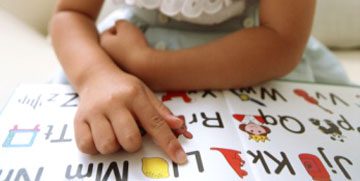Reading is described as a complex process that brings the reader and the text together. It is a process that requires continuous practice, development, and refinement. There are three stages of the reading process: the pre-reading stage, the reading stage, and the post-reading stage.
In the pre-reading stage, you make use of your prior knowledge, examine the text, and develop a purpose for reading.
In the reading stage, you make predictions as you read and then confirm or revise the predictions. For example, the double-entry journal enables you to write the text from your reading on one side and your reaction on the other side.
Read Also: Factors that Determine Readiness to Educational Learning
The post-reading allows you to retell the story, discuss the elements of a story, answer questions, and/or compare it to another text. For example, students can create summaries, where they take a huge selection and reduce it to its main points for a more concise understanding.
Comprehension is an intentional, active, and interactive process that occurs before, during, and after a person reads a piece of writing.
Reading is a rigorous academic activity that involves a great deal of time, especially at higher levels of education or study. It is an active process that facilitates and improves learning. When you read to learn, you must make conscious efforts to understand and comprehend your text to be able to apply what you learn to your studies.
Remember, at this stage, your reading involves an in-depth approach to make the most of your studies. This means that you must interpret, question, and sometimes refute what you read. The implication is that as you progress in your academic endeavors, your reading should truthfully understand the author‘s perspective of the world, which may differ from yours.
The Goals of Reading

People at different levels read for various purposes. If you get to the vendor‘s newspapers and magazine stand, you will be amazed at the number of persons swarming around the stand like bees. All the bystanders make efforts to read a newspaper or magazine. Try and find out the purposes for reading.
Again, you will be amazed at the divergent views of the people on why they read. For instance, you are reading this text for a particular purpose. Another person can pick up this document and read it for a different purpose.
However, you read to gain information for entertainment, to pass an examination, for recognition and the need for belongingness and acceptance, or to improve your social status. The purpose may be to escape from the stress around you and relieve some tensions.
Many of us read newspapers and magazines, either in print or online, to inform us about current events. In some cases, the bias of the writer is explicit, and this leads us to interpret what is said considering this bias.
It is, therefore, easy to view an article as a statement of opinion rather than fact. Political preferences, for example, are well known in the press.
Underlying this is the more general theme of learning and development, to develop your thoughts, incorporate new ideas into your current understanding, see things from different angles or viewpoints, build your knowledge and understanding and improve yourself.
Learning, therefore, comes about not from reading and remembering details, but from developing your understanding of the meaning of the details.
Read Also: Factors that Affect Equality of Educational Opportunity
